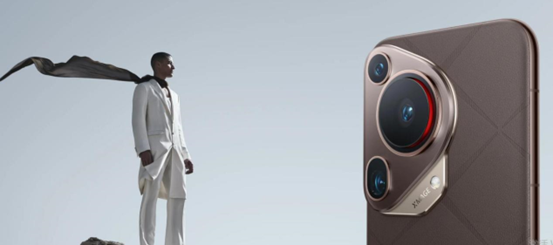The
way we view and use cameras has changed significantly in the field of
photography due to smartphone cameras becoming the go-to equipment for taking
pictures. This transition from traditional cameras to those embedded in
smartphones reflects broader technological advances and changing consumer
behaviors. As smartphones integrate more sophisticated camera technologies,
they challenge the need for traditional cameras, offering a compelling blend of
convenience and high-quality imaging.

Revolutionizing Photography with Smartphones
The
smartphone’s revolution in photography is reshaping our approach to capturing
moments. As we explore the enhancements smartphone cameras offer, it becomes
evident why they have become preferred over traditional cameras by many
worldwide users.
Increase Portability
The
convenience and portability of smartphone cameras make them the perfect tool
for capturing moments on the go, fitting powerful photographic capabilities
into our pockets. Unlike bulky traditional cameras, smartphones can be
effortlessly carried everywhere, ensuring you never miss a photo opportunity.
This easy access has made photography more accessible to everyone, turning it
into a daily practice rather than a specialized or planned activity.
Enhance Image Quality
The
image quality of smartphone cameras has made remarkable advancements, making
them competitive with traditional cameras. For instance, the huawei pura 70 ultra
features a camera system that captures stunning, high-resolution images with
excellent color accuracy and detail. These improvements are achieved through
better sensors, optics, and image processing algorithms, making smartphones
suitable for amateur and professional photography.

Integrate Advanced Features
Smartphone
cameras now incorporate a wide range of advanced features once only found in high-end
traditional cameras. These features include optical image stabilization,
continuous autofocus, and exposure control. Additionally, smartphones offer
various shooting modes, such as portrait, panorama, and macro, which expand
creative possibilities without needing extra equipment.
Accelerate Sharing Capabilities
One
of the most significant advantages of smartphone cameras is their ability to
share photos instantly. Users can quickly upload images to social media
platforms’ cloud storage by connecting to the internet or sending them directly
to friends and family. This immediate sharing feature surpasses traditional
cameras, which often require additional steps to transfer photos to other
devices before they can be shared.
Expand Video Functionality
Smartphones
excel in capturing still images and have expanded their video functionality.
Modern smartphones can record videos in high resolutions, such as 4K or even
8K, providing exceptional quality that rivals traditional video cameras.
Additionally, features like slow motion, time-lapse, and hyper-stabilization
enhance the capabilities of smartphone video recording, making them incredibly
versatile tools for video production.
Improve Low-Light Performance
Improvements
in low-light performance have significantly enhanced the utility of smartphone
cameras. With larger sensors, wider apertures, and advanced noise reduction
technologies, smartphones can now capture clear, detailed images even in poorly
lit environments. This capability has further closed the gap between smartphone
cameras and traditional cameras.
Innovate with AI Technology
The
forefront of smartphone camera innovation is driven by artificial intelligence
(AI), which optimizes settings based on the scene, enhances image quality after
capturing, and can even identify subjects to focus on. This intelligent
technology automates complex photographic techniques, making sophisticated
photography accessible to everyone.
Conclusion
Smartphone
cameras have revolutionized photography, making it more accessible and
integrated into our daily lives. With continuous improvements in portability,
image quality, integrated features, and the ability to instantly share
high-quality videos, smartphone cameras are replacing traditional cameras and
reshaping the entire photography landscape. As these devices continue to
evolve, they promise to bring even more advanced capabilities to users
worldwide.
